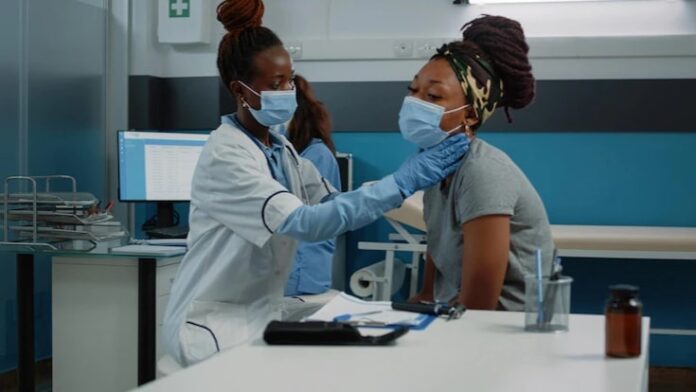Environmental monitoring in healthcare settings is vital for various reasons ranging from product quality assurance to cold chain management to maintaining safety standards. However, one overlooked environmental monitoring application is being explored in greater depth today thanks to recent research findings—the role of environmental monitoring in reducing the spread of hospital-acquired infections.
The COVID-19 pandemic put this issue in the public spotlight, as many governments worried about the possible collapse of healthcare systems from the spread of the virus in hospitals and to medical staff. This concern highlighted an issue that has always been present in the healthcare system: the risk of spreading infections in hospitals.
Thankfully, many hospitals are taking new steps to minimize hospital-acquired infections to protect both patients, many of whom are immunocompromised and hospital staff. Moreover, researchers have collected important data that could shed light on what might reduce hospital-acquired infections. More research is still needed to confirm current findings, but what seems abundantly clear is that environmental monitoring is key to understanding and addressing this pressing problem.
Let’s explore the role of environmental monitoring in reducing the spread of infections in hospitals and explore some possible strategies that healthcare professionals might find helpful.
How are Data Loggers Used as Environmental Monitoring Tools?
Data loggers are small electronic devices that collect environmental data from their surroundings, such as temperature, humidity, or differential pressure. Data loggers and other environmental monitoring tools play a central role in our healthcare systems by ensuring that storage facilities of pharmaceutical products are at adequate temperatures. They also help pharmaceutical companies develop a reliable method of automated alerts that notify managers of unsafe storage conditions.
Data loggers are also already an essential part of regulatory compliance for pharmaceutical companies since regulators require companies to provide storage temperature data so they can ensure that products are safe and effective for consumers. In addition, since the current integration into healthcare systems and practices, it makes sense that data loggers are taking on a significant role in researching and preventing hospital-acquired infections.
Data loggers can measure and record ambient temperature and humidity, monitoring air quality and potential pollutants. Data loggers are already being used to monitor various environmental problems, so logically, they are adopted to track potentially infectious pathogens spreading within a hospital environment. In addition, this is especially true considering that reducing hospital-acquired infections has been deemed an urgent goal by the US Department of Health and the Human Services Action Plan.
Transmission of Hospital-Acquired Infections
The mitigation of hospital-acquired infections becomes more complex, given that these infections can occur due to endogenous and exogenous microorganisms or pathogens. Endogenous pathogens are microorganisms that patients carry within their bodies that can cause infections in a hospital environment. Exogenous microorganisms spread through environmental reservoirs that are outside a patient’s body.
Moreover, the percentage of hospital-acquired infections that occur due to endogenous vs. exogenous pathogens is still unclear and is an area of ongoing research. The role of data loggers is related to the spread of exogenous pathogens. However, these pathogens may spread through various environmental reservoirs such as the air, water, medical equipment, or food supply.
Most researchers agree that it is virtually impossible to eradicate endogenous pathogens that create hospital-acquired infections ultimately. Still, that action can and should limit the spread of exogenous pathogens.
Environmental monitoring systems and data loggers could play a central role in detecting pathogens or pollutants in the air, water, and food supply so that workers can limit hospital-acquired infections. Data loggers can also help ensure safe storage conditions for hospitals’ food, water, and medical supplies by detecting environmental conditions like humidity and ventilation, which could facilitate the spread of infectious pathogens. Data loggers could also be used to validate the success or failure of different strategies to mitigate the spread of dangerous microorganisms.
Possible Strategies to Limit Hospital-Acquired Infections
The specific, standardized strategies that all hospitals should use to limit hospital-acquired infections are still an area of ongoing research. However, according to Dickson Data, healthcare providers and other industries are exploring various approaches to limit infections.
For example, many hospitals are taking steps to integrate HVAC and HEPA air filtration filters to improve internal air quality. These filtration systems have shown promise in limiting the spread of infectious diseases.
Other systems, such as air purifiers, air ionizers, and UV light technologies, are also being explored, although there currently needs to be more research that supports their effectiveness. Data loggers are also being used to detect environmental contaminants, such as toxic mold, which could endanger patients.
Some hospitals also rely on data loggers that monitor the storage conditions of food and water supplies to detect temperature or humidity that might lead to spreading infections.
To sum up, data loggers will play an essential role in researching how to limit the spread of hospital-acquired infections. However, more research is needed to identify best practices and sensible infection mitigation strategies.














































